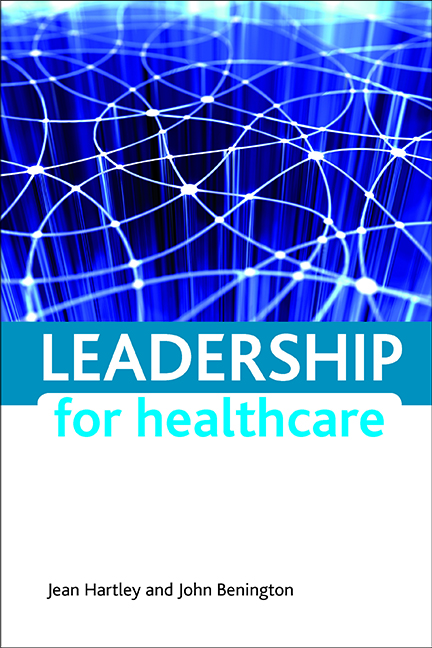Book contents
- Frontmatter
- Contents
- List of tables and figures
- Acknowledgements
- Chapter 1 Introducing leadership
- Chapter 2 Leadership concepts
- Chapter 3 Characteristics of leadership
- Chapter 4 The contexts of leadership
- Chapter 5 The challenges of leadership
- Chapter 6 The capabilities of leadership
- Chapter 7 Consequences of leadership
- Chapter 8 Leadership development
- Chapter 9 Conclusions
- References
- Index
Chapter 5 - The challenges of leadership
Published online by Cambridge University Press: 01 September 2022
- Frontmatter
- Contents
- List of tables and figures
- Acknowledgements
- Chapter 1 Introducing leadership
- Chapter 2 Leadership concepts
- Chapter 3 Characteristics of leadership
- Chapter 4 The contexts of leadership
- Chapter 5 The challenges of leadership
- Chapter 6 The capabilities of leadership
- Chapter 7 Consequences of leadership
- Chapter 8 Leadership development
- Chapter 9 Conclusions
- References
- Index
Summary
In this chapter:
We examine the challenges, or purposes, of leadership. What is it that leadership is trying to achieve?
First, we examine the challenge of ‘sense-making’ – how do leaders make sense of the context and the purposes they are trying to achieve, and how do they communicate this to others to create a clear sense of common purpose? We examine ‘big picture sense-making’ and then turn to consider the different types of problems that leaders may face, and the degree of match between their leadership strategies and the problem, or challenge, to be addressed. How do leaders think about and orchestrate the work to be done? We distinguish between technical and adaptive challenges (sometimes called tame and wicked problems) and the leadership approaches that seem to be most effective in tackling each of these two types of problem.
We then turn to examine five concrete leadership challenges for healthcare organisations. These are: the merger/acquisition challenge; leading partnerships and networks; leading organisational turnaround; leading organisational change, innovation and improvement; and nurturing future leaders in the organisation.
This chapter focuses on the challenges and purposes of leadership (see Figure 5.1). What are the goals or outcomes that leadership is aiming to achieve? We have called these tasks ‘challenges’ in line with an emerging literature that frames leadership purposes in this way (Heifetz, 1994; Heifetz and Laurie, 1997; Burgoyne et al, 2005; Morrell and Hartley, 2006). Most definitions of leadership focus on purpose in some way – for example, leadership as being influence towards a common goal, or mobilising others to tackle tough problems. The definitions of leadership from Stogdill (1974) or Smircich and Morgan (1982) are a reminder that the leader's role may also be to find or frame the purpose not just to implement agreed goals, or communicate a vision to others.
Leadership as sense-making and as constituting challenges
Leadership theory from the 1980s onwards has revived interest in leadership as providing ‘vision’ and a sense of clear purpose and direction for an organisation or group of followers (for example, Conger and Kanungo, 1987; Nadler and Tushman, 1990; Bryman, 1992). Yet vision is not a simple read-off from the context.
- Type
- Chapter
- Information
- Leadership for Healthcare , pp. 51 - 74Publisher: Bristol University PressPrint publication year: 2010

